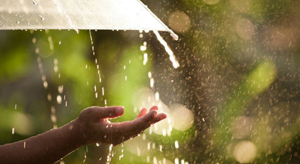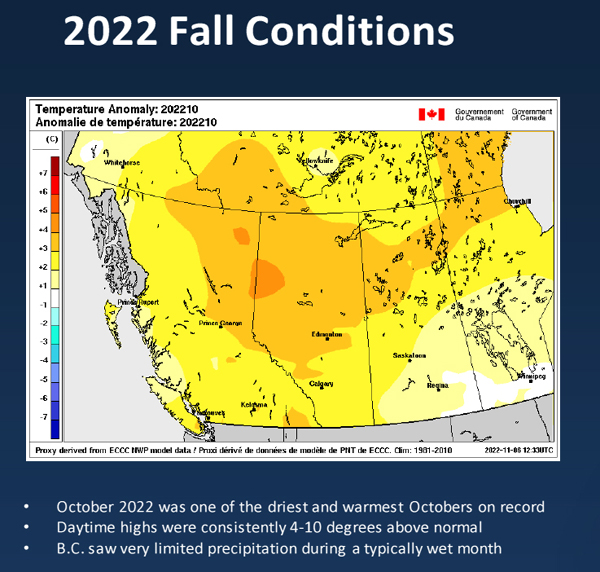Thursday April 13, 2023 | VICTORIA, BC
by Mary P Brooke | Island Social Trends | EMERGENCY PREPAREDNESS NEWS ARCHIVE
The early forecast for overall spring-summer 2023 weather conditions is ‘normal’, say provincial-level forecasters.
Today a livestreamed Seasonal Preparedness presentation was delivered by Emergency Management and Climate Readiness Minister Bowinn Ma.

She was joined by representatives of Environment and Climate Change Canada, the River Forecast Centre, and the BC Wildfire Service.
The one-hour session covered weather conditions heading into spring and summer 2023, as will relate to wildfires and possible flooding… both of those possibly exacerbated by the drought of 2022.
There was a repeated message about being prepared for all emergencies related to extreme weather and climate change. Emergency Preparedness Information at PrepareYourself.ca has plenty of information.
While for years the messaging was about preparation for 72-hour self-sufficiency in an emergency, now it’s more realistic to be prepared for seven days, especially on Vancouver Island and in rural areas, to which supply chains might be interrupted.
Dry fall into near-normal spring:
People will remember the extraordinarily warm month of October 2022 when temperatures were consistently four to 10 degrees above normal on a daily basis. October is normally one of the wettest months in BC, but the dry warm fall season created drought then which has lingered into spring 2023.
“There was a longer summer then we went off a cliff to a much colder winter,” said Armel Castellan, Warning Preparedness Meteorologist, Environment and Climate Change Canada. While it was milder in January, he said that February and March “deviated to a much colder scenario again”.
Castellan noted that a “widespread precipitation deficit” has resulted for across most of BC over the last three seasons, leaving ground moisture levels at anywhere “from 45 to 60 to 70 percent of normal”.
Near-normal spring:
Meanwhile, it’s a “near normal” weather pattern setting up for spring, said Matt MacDonald. lead forecaster, BC Wildfire Service.
Castellan said mid-April to mid-May will see a ‘sub-seasonal’ forecast, with below-normal temperatures for about four weeks.

But all the speakers today emphasized that more accurate weather forecasts are really only possible two to three weeks ahead of time. Castellan suggested people follow weather on a daily basis.
Weather could “flip” in May or June to more neutral conditions, said Castellan. He even ventured to suggest that May through July could see a “warmer anomaly”.
Spring-summer weather is the critical factor for drought, so a normal amount of rainfall in April to June would be welcome by the BC Wildfire Service.
Potential for wildfires and floods:
That can potentially contribute to wildfires (there have been 11 already this year, two of them person-caused), but also to flooding if soil has become resistant to absorption.
The southern Gulf Islands are among the driest areas of BC during wildfire season, it was noted today.
Be prepared, stay alert:
Today’s biggest takeaway was for all individuals, families and households to always have an emergency kit as well as grab-and-go bags for every member of the family.
Ma talked about ‘preparing for the worst but hoping for the best’.
Emergencies can be related to heat, flooding, wind storms, earthquakes or other natural conditions.
She challenged British Columbians to start building their emergency kits and grab-and-go bags now ahead of Emergency Preparedness Month which comes up in May.
Free virtual emergency preparedness workshop:
You can participate in a free Virtual Emergency Preparedness Workshop from the comfort of your own home!
Victoria Ready has created this free virtual Emergency Preparedness Workshop Video. You will learn how to prepare for emergencies, make a plan, get your kit together, and connect with your neighbours.








